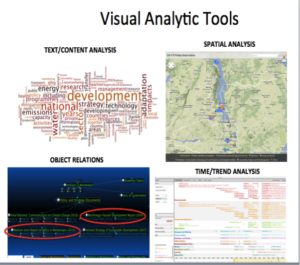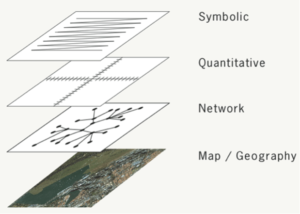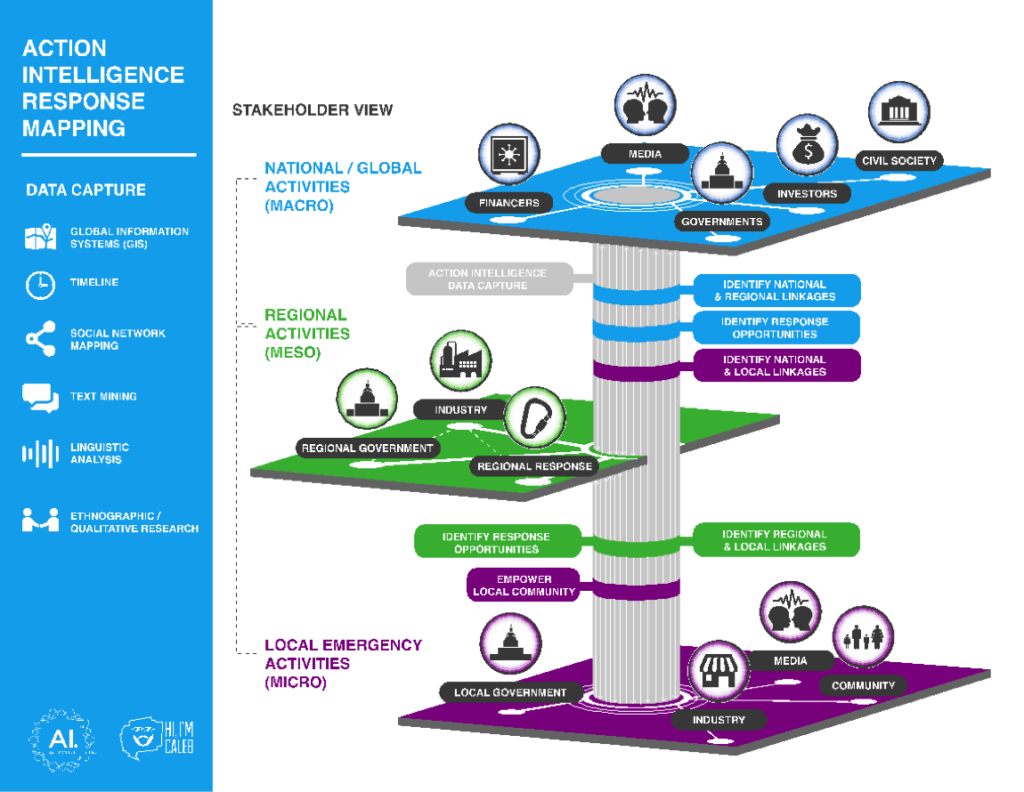 For the Solution “Operationalize collaboration”, Jerri Husch PhD, President of 2Collaborate Consulting, shares tools that allow us to visualize and integrate data across disciplines for collaborative action towards hurricane recovery.
For the Solution “Operationalize collaboration”, Jerri Husch PhD, President of 2Collaborate Consulting, shares tools that allow us to visualize and integrate data across disciplines for collaborative action towards hurricane recovery.
Reflections on Collaboration:Data for Post-hurricane Recovery
The 2017 hurricane season spawned one of the most devastating series of storms to hit the United States and the Caribbean in recent history. Hurricanes Harvey, Irma and Maria (“HIM”) will not only re-write weather and climate history, but are also fundamentally testing the response capacity of the international community. Although the response was swift in the United States, many countries with deep ties to the Caribbean region are now faced with an enormous task that far outweighs their own capacity to deliver a meaningful recovery. For instance, the long response and rescue time for Hurricane Maria that swept through Puerto Rico on 11 September still finds residents waiting for much needed aid after almost a month.
The disasters evoked by HIM will redefine the existing social order—property and land ownership, infrastructure design, capital investment, access to power and decision-making— across numerous countries and territories. In short, communities have to start again.
Designing Collaborative Solutions
Political, social and economic decisions are all going to affect the reconstruction of the region and it is essential that appropriate and relevant decisions be made using the most reliable data and culturally accurate information available. What data will inform the life, community and nation altering decisions that have to be made quickly? Long held models of emergency response and post-disaster recovery are being challenged and there is already evidence of, 1) shifts of responsibility from national to local-level administrations and citizens, 2) transformation of financing and resource flows, and 3) re-configured patterns of power, authority, decision making and accountability.
The most immediate outcome of these changes is the need to design culturally appropriate solutions to the complex social—-health, food, transportation, housing— challenges. Will power lines, for example, be buried or return to being strung between poles? Will agriculture be based on agro-ecological models or models of industrial agricultural production? Whose land will grow what crops? Who will have the resources needed to build what kinds of structures? These are only a few of the myriad of governance issues that each locale is having to confront and what data will help inform the decisions is a critical component for moving forward.
Innovation and Data for Collaboration
 Collaboration between diverse actors will require a multi-dimensional and dynamic understanding of the links and connections involved in response, recovery and reconstruction. New tools capable of analyzing linkages will allow more realistic insights to emerge. Tools that can support complex trend analyses, contingency planning and collaborative decision-making need to be applied. By using advances in information and communication technologies (ICT) as well as new visual analytic and digital mapping technologies (DMT), geographic, linguistic, social and temporal data can be aligned to tell an integrated, visually accurate story. By transforming text and “linear” information into visual and multi-dimensional representations, relationships between ideas, words, activities, organizations, groups and individuals can be understood more quickly. Linking Geographic Information Systems (GIS) information (location) with text, social network maps and dynamic timelines can provide quick insights into the details of any given issue.
Collaboration between diverse actors will require a multi-dimensional and dynamic understanding of the links and connections involved in response, recovery and reconstruction. New tools capable of analyzing linkages will allow more realistic insights to emerge. Tools that can support complex trend analyses, contingency planning and collaborative decision-making need to be applied. By using advances in information and communication technologies (ICT) as well as new visual analytic and digital mapping technologies (DMT), geographic, linguistic, social and temporal data can be aligned to tell an integrated, visually accurate story. By transforming text and “linear” information into visual and multi-dimensional representations, relationships between ideas, words, activities, organizations, groups and individuals can be understood more quickly. Linking Geographic Information Systems (GIS) information (location) with text, social network maps and dynamic timelines can provide quick insights into the details of any given issue.
The new tools allow data from a variety of perspectives to be aligned so that multiple dimensions can be viewed simultaneously to quickly show patterns and trends between (and within) data sets.
Aligned data
 When fully aligned by time and geographic location, in-depth comparisons can add to an understanding of rapidly changing social contexts. By using a dynamic data platform, the information needed to understand the history, stakeholders and activities is readily available. To fully address the future new ways of seeing the current world are essential.
When fully aligned by time and geographic location, in-depth comparisons can add to an understanding of rapidly changing social contexts. By using a dynamic data platform, the information needed to understand the history, stakeholders and activities is readily available. To fully address the future new ways of seeing the current world are essential.
Dynamic mapping platforms will provide the action intelligence needed to plan for the future, design the infrastructure and reconstruct for resilience.
Dynamic Data Platform
Jerri Husch, President and founder of 2Collaborate Consulting, holds a PhD in Sociology and has over 25 years experience in international social development policy, socio-cultural methods and the implementation of evidence based management practice. Dr. Husch has worked in WHO, UNDP, UNICEF and the UN Secretariat facilitating sustainability of cross-sector partnerships and networks, participatory decision making, impact assessments, monitoring/evaluation and risk assessment. She has extensive experience in such technical areas as, climate change adaptation and community resilience, food security, global health policy, gender and livelihoods.
